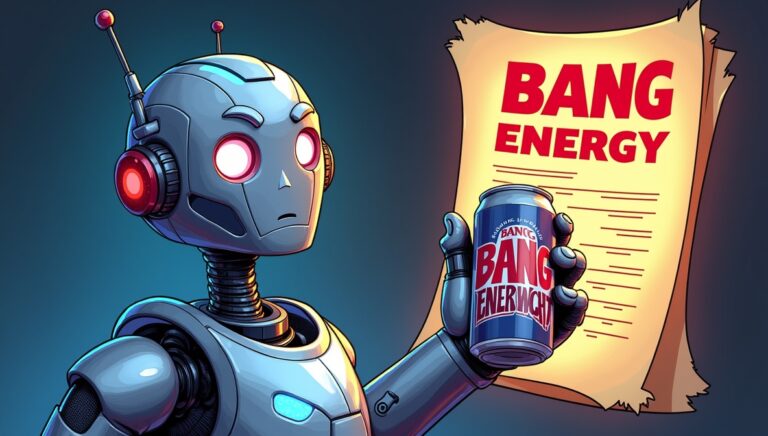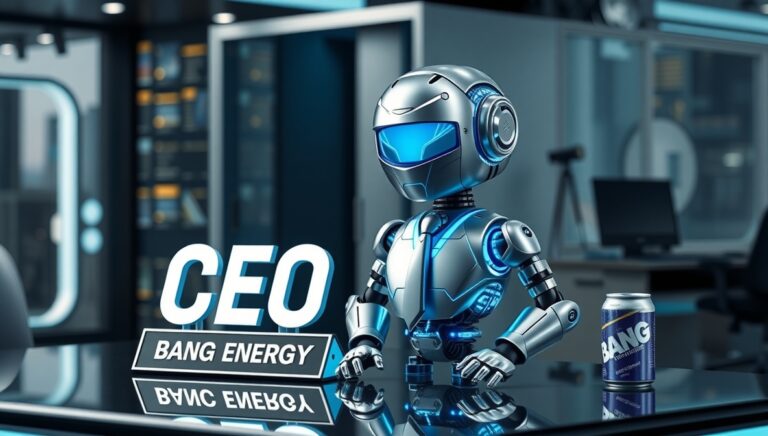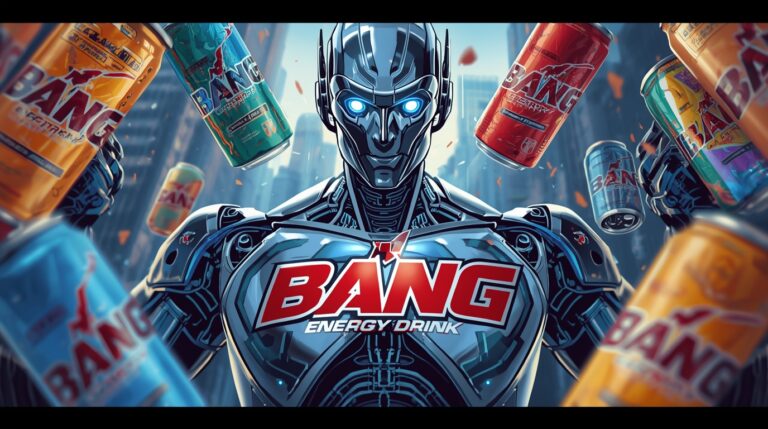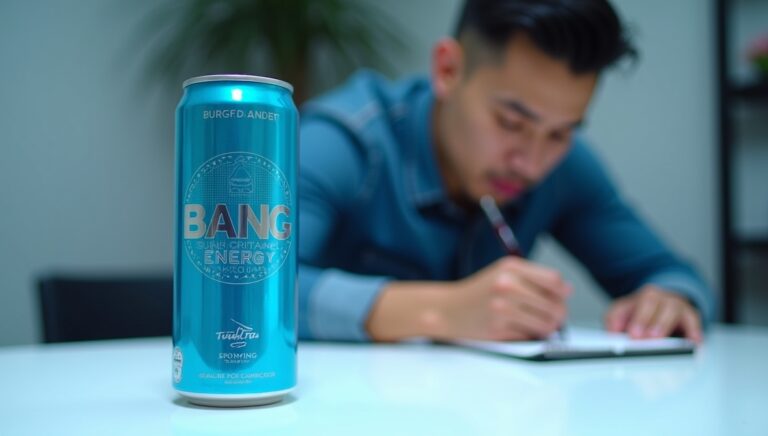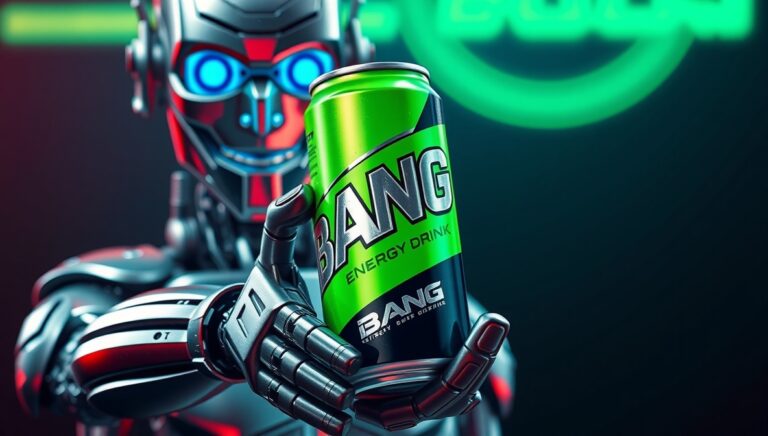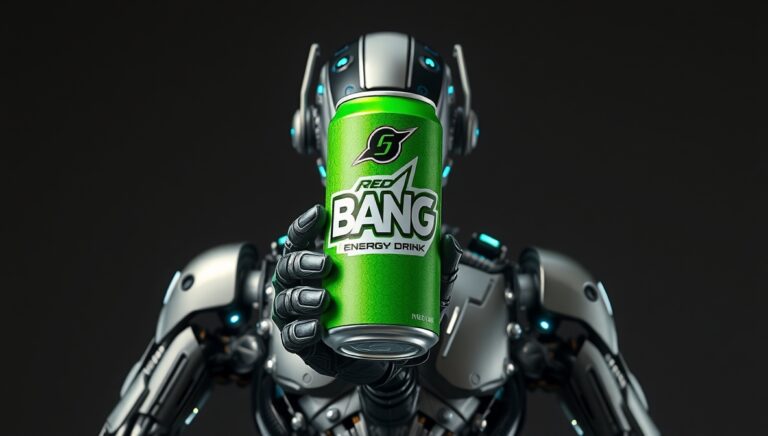How Much Caffeine in Bang Energy: Exploring Its Power, Ingredients, and Effects
Understanding how much caffeine in Bang Energy is essential for anyone who consumes energy drinks regularly or occasionally. Caffeine plays a crucial role in providing the boost many people seek, but knowing the amount, effects, and safe limits can make a significant difference in how you use these drinks. Whether you are a fitness enthusiast, a student pulling all-nighters, or someone looking for an afternoon energy lift, this article explores every aspect of Bang Energy—its caffeine content, ingredients, health implications, and comparisons with other beverages.
The Rise of Energy Drinks in Modern Culture
Over the last decade, energy drinks have become a cultural phenomenon. They’re not just popular among young adults but also widely consumed by professionals, athletes, and even gamers. Many turn to them for quick energy and increased focus. This global trend led to a booming energy drink industry that thrives on innovation and marketing. Among the various brands available, Bang Energy has established itself as a leader due to its unique formulation, bold flavors, and strong brand identity.
Bang Energy positions itself as more than just a beverage—it’s marketed as a performance-enhancing drink that fuels both body and mind. Understanding how much caffeine in Bang Energy provides clarity about why it’s so effective at energizing users, and why it must be consumed with awareness.
What Makes Bang Energy Different?
Bang Energy sets itself apart from other drinks like Red Bull, Monster, and Rockstar by promoting a “clean energy” philosophy. It contains zero sugar, zero calories, and no artificial colors, which appeals to health-conscious consumers. Instead of loading the drink with sugar, Bang relies heavily on caffeine and other performance ingredients to deliver results.
When discussing how much caffeine in Bang Energy, it’s essential to understand that caffeine is its main driving force. However, the formula also includes branched-chain amino acids (BCAAs), CoQ10, and electrolytes, all of which support muscle recovery, heart health, and hydration. The combination of these ingredients enhances endurance and focus while minimizing the post-caffeine crash that many experience with other energy drinks.
Breaking Down the Caffeine Content
One of the most important details that consumers want to know is how much caffeine in Bang Energy they are actually consuming. Each 16-ounce can of Bang Energy contains 300 milligrams of caffeine—a significant amount compared to other popular beverages.
To put that into perspective:
- A standard 8-ounce cup of coffee typically contains between 80–100 mg of caffeine.
- A 16-ounce can of Monster Energy contains about 160 mg.
- A 12-ounce can of Red Bull contains around 111 mg.
This means that one can of Bang Energy has approximately three times more caffeine than a regular cup of coffee and nearly twice the amount found in Monster. For many, this high dose can be both beneficial and risky depending on individual tolerance.
The Science Behind Caffeine and Its Effects
Caffeine works primarily by blocking adenosine receptors in the brain. Adenosine is a neurotransmitter that promotes sleep and relaxation. When caffeine blocks these receptors, it reduces fatigue and increases alertness. This mechanism is why people feel more awake and energetic after consuming caffeine.
However, the body’s response to caffeine depends on several factors, including age, body weight, and overall health. When we examine how much caffeine in Bang Energy, it becomes clear that 300 mg can provide an intense boost that lasts for several hours. For experienced caffeine users, this may feel empowering and productive. For those sensitive to caffeine, it could lead to jitters, rapid heartbeats, or difficulty sleeping.
Safe Daily Caffeine Limits
Health experts, including the U.S. Food and Drug Administration (FDA), recommend a maximum daily caffeine intake of 400 milligrams for healthy adults. Given that Bang Energy contains 300 mg per can, consuming more than one in a day could push you close to or beyond this limit.
Understanding how much caffeine in Bang Energy is especially important for individuals who already consume coffee, tea, or pre-workout supplements. Mixing multiple caffeine sources in one day can easily lead to overconsumption, resulting in side effects such as restlessness, nausea, or an increased heart rate.
While occasional consumption within limits is generally safe for most adults, people with certain medical conditions—like heart problems or anxiety disorders—should be extra cautious. Pregnant and breastfeeding women are also advised to limit caffeine intake significantly.
Comparing Bang Energy with Coffee and Other Drinks
For those wondering how Bang Energy compares to traditional coffee or other energy drinks, the difference lies not only in caffeine content but also in additional ingredients. Coffee is natural and rich in antioxidants, while energy drinks like Bang combine caffeine with synthetics and supplements.
When we consider how much caffeine in Bang Energy, we see that it delivers more caffeine than most beverages in a single serving. While coffee offers gradual stimulation, Bang provides a quick surge of energy. This makes it ideal for situations requiring immediate focus—like intense workouts or late-night study sessions—but not for regular, everyday consumption.

The Role of Other Ingredients in Bang Energy
Apart from caffeine, Bang Energy includes several other compounds that contribute to its performance-enhancing effects. These include:
- BCAAs (Branched-Chain Amino Acids): Promote muscle recovery and reduce soreness.
- CoQ10 (Coenzyme Q10): Supports cellular energy production and heart health.
- Super Creatine: A patented form of creatine claimed to improve endurance and cognitive performance.
- Electrolytes: Help maintain hydration levels during exercise or physical activity.
Understanding how much caffeine in Bang Energy is one part of the equation. The synergy of these ingredients allows users to feel a balanced energy lift that supports both physical and mental performance. However, scientific evidence on the effectiveness of “Super Creatine” in particular remains limited, and some experts question its bioavailability.
How Bang Energy Impacts the Body
The first 30 to 45 minutes after drinking Bang Energy is when caffeine levels peak in the bloodstream. This is when users begin to feel alert, focused, and energized. Caffeine increases the release of adrenaline, which enhances heart rate and muscle readiness—making it popular among athletes and gym-goers.
However, as the body metabolizes caffeine, the effects gradually wear off. After 4 to 6 hours, the stimulating impact fades, and some individuals might experience a mild “crash.” When discussing how much caffeine in Bang Energy, it’s vital to note that such a large dose can affect sleep cycles, especially if consumed in the evening.
Regular consumption of highly caffeinated drinks can also lead to tolerance, meaning users might need more caffeine over time to feel the same level of alertness. bang energy drink
The Psychological Connection with Energy Drinks
The modern lifestyle, filled with stress and tight deadlines, has created a psychological dependency on energy drinks. Many people reach for them automatically when feeling fatigued or mentally drained. The appeal of Bang Energy lies not just in its caffeine content but also in its branding—colorful cans, bold flavors, and the promise of instant vitality.
Learning how much caffeine in Bang Energy can help break this dependency by encouraging more mindful consumption. Recognizing that the energy one feels comes primarily from caffeine, not magic, helps users make healthier, more balanced decisions.
Energy Drinks and Fitness Performance
Bang Energy has become particularly popular within the fitness community. Many gym enthusiasts drink it before workouts to enhance endurance and focus. Caffeine has been proven to improve physical performance by stimulating the central nervous system and mobilizing fat stores for energy.
Understanding how much caffeine in Bang Energy matters for athletes because it determines the timing and dosage for optimal results. Consuming Bang approximately 30–45 minutes before training can improve reaction time, focus, and muscle output. However, overuse can cause dehydration, anxiety, or even heart palpitations, particularly during intense exercise sessions.
Caffeine Sensitivity and Individual Tolerance
Caffeine sensitivity varies greatly among individuals. Some can drink multiple cups of coffee or cans of Bang Energy without issue, while others experience strong effects from just a small amount. Genetics, diet, and sleep patterns all influence how the body metabolizes caffeine.
Those who are new to energy drinks should take the time to understand how much caffeine in Bang Energy they can handle. Starting with half a can or opting for a lower-caffeine alternative can help prevent unpleasant side effects. If you notice signs like restlessness, dizziness, or stomach upset, it’s best to cut back.
Energy Drink Regulations and Safety Standards
The energy drink industry is regulated differently from country to country. In the United States, Bang Energy must comply with FDA labeling requirements and caffeine limits, but it is categorized as a dietary supplement rather than a beverage. This means the regulations are slightly less strict than for soft drinks.
Understanding how much caffeine in Bang Energy gives consumers the power to make informed choices within the existing framework. While the company provides clear labeling, many users overlook the warning that the drink is not recommended for those under 18 years old or sensitive to caffeine. Responsible labeling and consumer awareness are key to ensuring safe consumption practices.
The Potential Risks of Overconsumption
Though caffeine is generally safe in moderate amounts, consuming excessive levels can cause short- and long-term health issues. Drinking multiple cans of Bang Energy in one day could easily lead to caffeine toxicity.
Symptoms of overconsumption include:
- Rapid heartbeat
- Tremors
- Nausea and vomiting
- Insomnia
- Anxiety or panic attacks
By learning how much caffeine in Bang Energy each can provides, users can avoid these risks and enjoy the drink responsibly. It’s also crucial to stay hydrated and avoid mixing energy drinks with alcohol, which can mask the sedative effects of alcohol and lead to dangerous overdrinking.
Caffeine Withdrawal and Dependency
Frequent energy drink users might notice that skipping a day leads to headaches, fatigue, or irritability. These are common signs of caffeine withdrawal. Caffeine is mildly addictive, and consistent intake can create dependency.
Understanding how much caffeine in Bang Energy helps in managing intake strategically. Reducing consumption gradually rather than abruptly can minimize withdrawal symptoms. Switching to tea or decaffeinated coffee can also help balance energy levels without the crash.
Alternatives to Bang Energy
If you’re seeking a more balanced energy boost, there are several alternatives to Bang Energy:
- Natural sources of caffeine: Coffee, green tea, or matcha.
- Hydration-based drinks: Coconut water or electrolyte-infused beverages.
- Healthy snacks: Nuts, bananas, and yogurt can provide natural energy.
Knowing how much caffeine in Bang Energy makes it easier to compare these options and select one that aligns with your health goals. Sometimes, lifestyle adjustments like better sleep, balanced nutrition, and regular exercise can provide more sustainable energy than any canned beverage.
The Marketing Strategy Behind Bang Energy
Bang Energy’s success isn’t only due to its formula—it’s also about how it’s marketed. The brand uses social media influencers, fitness ambassadors, and vibrant packaging to attract consumers. Its messaging centers on empowerment, performance, and excitement.
However, while the brand’s appeal is undeniable, understanding how much caffeine in Bang Energy uncovers the scientific side behind the marketing. Awareness helps consumers see beyond slogans and make decisions that prioritize health over hype.
Effects on Sleep and Mental Health
Caffeine’s impact on sleep is well-documented. Consuming high-caffeine drinks late in the day can delay sleep onset and reduce overall sleep quality. For people who rely on energy drinks regularly, this can create a cycle of fatigue and overconsumption.
By being mindful of how much caffeine in Bang Energy, individuals can plan their intake earlier in the day, preferably before noon. Limiting consumption after afternoon hours helps maintain a healthy sleep schedule and mental balance.
Excessive caffeine can also exacerbate anxiety symptoms in sensitive individuals. It increases cortisol, the stress hormone, which can lead to feelings of unease or nervousness. Therefore, moderation is key.
Youth and Energy Drink Consumption
Energy drinks like Bang are not suitable for children or teenagers. The high caffeine content can negatively affect their developing nervous systems and lead to long-term issues like dependency or disrupted sleep cycles. Parents should be aware of how much caffeine in Bang Energy and educate young people about its potential effects.
Schools and sports organizations in some countries have even banned energy drinks to protect student health. Encouraging hydration and balanced nutrition remains a healthier way for young athletes to maintain energy.
Consumer Awareness and Responsible Consumption
The global popularity of energy drinks means consumers must take responsibility for understanding what they consume. Awareness begins with reading labels, researching ingredients, and knowing how much caffeine in Bang Energy each can contains.
Responsible consumption involves setting limits, staying hydrated, and avoiding pairing caffeine with other stimulants. Those who experience side effects should seek medical advice rather than increasing intake to “tough it out.”

The Future of Energy Drinks
The energy drink market continues to evolve, with brands experimenting with natural caffeine sources, adaptogens, and nootropics. Companies are increasingly aware of consumer demand for healthier options. In the future, we may see drinks that deliver sustained energy without excessive caffeine or artificial ingredients.
Knowing how much caffeine in Bang Energy today helps prepare consumers to evaluate future products more critically. As health awareness grows, transparency and balance will likely define the next generation of energy drinks.
Final Thoughts
Energy drinks like Bang can be powerful tools for boosting focus and endurance, but they should be consumed with awareness and moderation. The key question—how much caffeine in Bang Energy—reveals that each 16-ounce can contains 300 mg, a potent amount that can provide benefits or risks depending on how it’s used.
Consumers in the United States and around the world are becoming more informed about caffeine and its effects. With the right knowledge, people can make smarter choices—using energy drinks strategically rather than habitually.
Ultimately, caffeine is neither a friend nor a foe—it’s a tool. The difference lies in how responsibly we use it. By understanding how much caffeine in Bang Energy, users can harness its benefits without compromising their health, ensuring energy and productivity go hand in hand with balance and well-being.

